Analysis of multi network system load frequency control with different adaptive controllers
1Rohit kumar, 2Dr. Amit Kumar Choudhary
Published Date: 08-April-2022
Abstract: This paper presents a new design of various load frequency PI controllers based on various Artificial Intelligence (AI) optimization techniques optimization techniques such as Fuzzy logic, Adaptive Neuro Fuzzy interference system (ANFIS) for a three area power system Load Frequency Control (LFC) is a technique for regulating and controlling the frequency of an electric generator's output signal power within an area in response to changes in system loads and power in tie line changed with other. The frequency deviation is improved by the performance of the controller under investigation. signal, as well as the peak overshoot and settling time of the frequency output signal, .MATLAB/SIMULINK tools are used to validate the suggested scheme's performance.
Keywords: PI (Proportional and Integral), Fuzzy, ANFIS (Adaptive Neuro Fuzzy interference system) , LFC (Load Flow Control), MATLAB (Matrix Laboratory).
I. INTRODUCTION
A large electrical power system consists of a number of interconnected control areas; load frequency control (LFC) of a multi-area power system is the mechanism that balances between supply and demand of power [1, 2]. The frequency has an inverse relationship with the load that is changing continually, and the change in system The load changes the speed of all generator rotors in the system, causing the system to alter frequency [3, 4]. The fluctuation of the system frequency is caused by an imbalance between supply and load, which can degrade the power system's performance and make its control more difficult. One of the major control difficulties in electric power system stability and control has been LFC.
Frequency of Loading Control is necessary to maintain system frequency and inter-area.tie-line power flow as near with neighboring control areas at the scheduled values [5-7]. To satisfy these objectives, a control error signal called the area control error (ACE) is measured. This signal is a linear combination of net interchange and frequency deviation, and represents the real power unbalance between supply and load of power [2-4]. To control the frequency of each area, a proportional-integral-derivation (PID) controller is used to regulate the PID controllers is ACE, whose parameters tuning are selected depending on the control area characteristics [3-6]. PID controllers meet most of the 90% of industrial needs. The popularity of PID controllers is due to their functional simplicity and reliability because they provide robust and reliable performance for most systems. Many control schemes such as the conventional proportional-integral (PI) controller, the proportional-integral-derivation (PID) controller and optimal control have been proposed to achieve improved performance [5-8].
Over the 1940s, many methods have been developed for obtaining the P, I, D controller parameters [9-10]. In 1942, Ziegler and Nichols suggested two experimental methods for swiftly adjusting controller parameters without knowing the system's precise dynamic model to adjust. Both methods are empirical and based on tests [11]. This method requires the system to complete a simple proportional controller Kp which increases the gain to bring the system to oscillate permanently (Oscillations maintained), it is thus at the limit of stability. After noting the critical gain Kcr and critical period of oscillation Tcr response, we can calculate the P, I, D controller parameters. In early 1970 Fosha and Elgerd in their pioneering work applied classical optimal control methodology to solve LFC problems [10]. In the 1990s, in attempt to establish simple but effective rules that were more efficient than those of the time, The adjustment dynamics of a vast number of process behaviours were studied by Ziegler-Nichols, ström, Hagglund, and Wittenmark. This analysis led to the establishment of tables used in the calculation of P, I and D from simple measurements [10-12].
International Journal of Electrical and Electronics Research ISSN 2348-6988 (online)
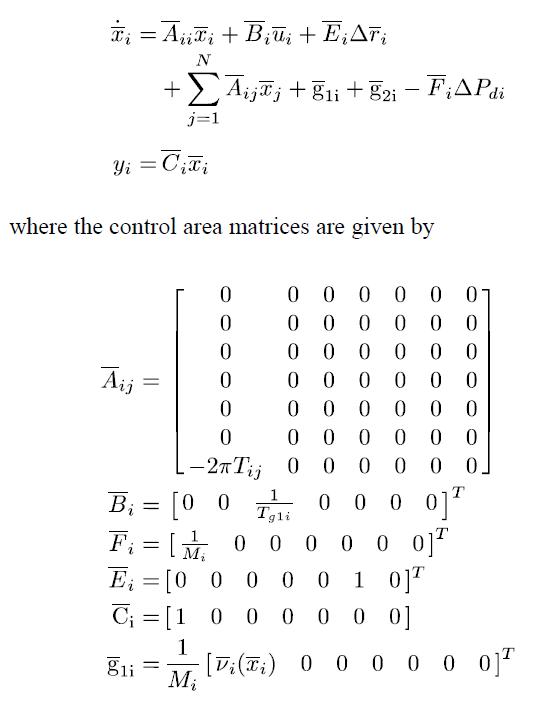
Vol. 10, Issue 2, pp: (9-16), Month: April - June 2022, Available at: www.researchpublish.com
Nowadays, one of promising control methods in industrial automation and process control is the Fuzzy Logic Control (FLC). Fuzzy logic is employed in practically all sectors of science because of its simplicity, robustness, and reliability including solving a wide range of control problems in power system control and operation [13]. Fuzzy logic is an intelligent technique developed by Professor Lotfi Zadeh. He first introduced the theory of fuzzy sets and fuzzy logic in 1965 when he wrote his first paper entitled Fuzzy Sets [14]. For tuning the optimal values of the PID controller parameters, we propose to use the fuzzy logic method.
The application of PID controller based Fuzzy Logic Control and ANFIS to load frequency control (LFC) of linked multiarea power systems is discussed in this study.The PID controller parameters are tuning using the fuzzy logic and ANFIS techniques. The interconnected multi-area power system is simulated for different disturbances in area-1, area-2, and area3.
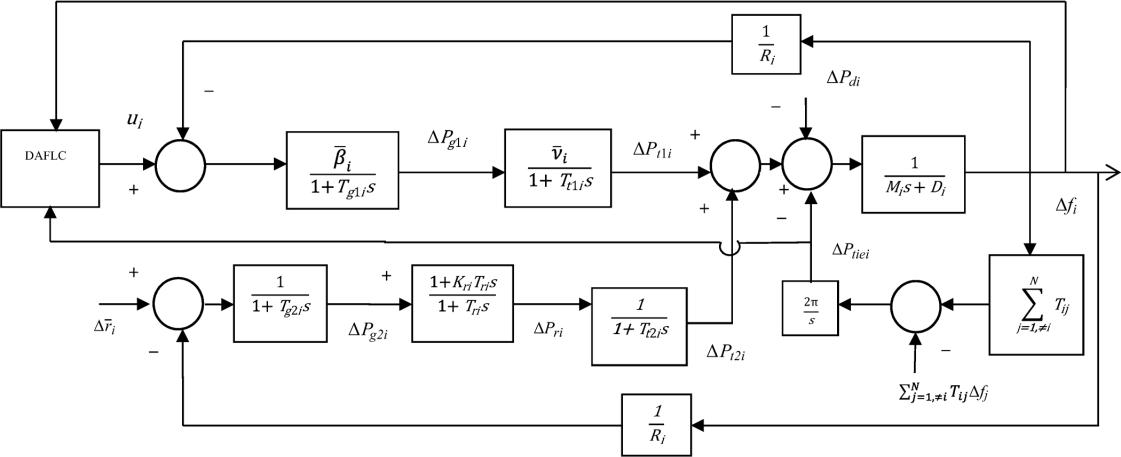
II. SYSTEM CONFIGURATION
Consider a power system with N LFC zones, each with a number of generators.. All generators in a given area are grouped together as a single generator unit [2].Moreover, each area is assumed to have a number of gas turbines of simple cycle and combined cycle types and a number of steam turbines of reheat type. Without loss of generality, it is assumed that the controller to be proposed is fitted in gas turbines, however steam turbines do not have control over the reference set-point. The nonlinearities of the GRC and the GDB are incorporated in the model as nonlinear functions. Figure 1 shows a block diagram of the LFC area in a multi-area system. The dynamic model of each area can be written as [15] ……..(1)
Fig. 1: Model of single system in multi area network
International Journal of Electrical and Electronics Research ISSN 2348-6988 (online)
Vol. 10, Issue 2, pp: (9-16), Month: April - June 2022, Available at: www.researchpublish.com
The parameters of each control area, the tie-line power between each area, and the functions are assumed unknown. To facilitate the design of a local adaptive fuzzy controller, model (1) is transformed to the controller canonical from as
………(2)
A. Generator Model The generator is a system which converts mechanical power provided by the turbine to electrical power.
B. The swing equation of a synchronous machine to small represents the relationship between mechanical and electrical power perturbation [16]: ….(3)
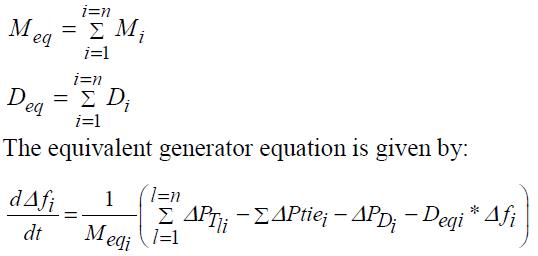

Power system loads are a composite of a variety of electrical devices. Some loads depend on the change of frequency and others don’t. In general the expression of the electrical power which depends on the change on the frequency can be expressed by [16]: ..(4)
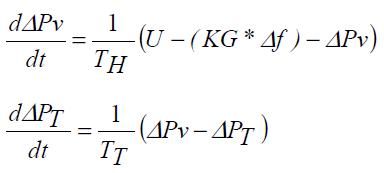
Where ∆w is rotor speed deviation, M is inertia constant, ∆PD is Non-frequency-sensitive load change, D is load-damping constant and D∆w is Frequency-sensitive load change. In multi-machine system, if there are several power generating units operating in parallel in the same region, and if all generators are assumed turn with the same speed of synchronism, an equivalent generator will be developed to represent all the area for simplicity. The equivalent generator inertia constant, and the equivalent load-damping constant can be represented as follows: …..(5)
B. Governor –Turbine Model
A governor is a valve that regulates the amount of fuel or steam that enters the system. In other hand, a mechanical system named Turbine, which converts thermal power provided by the governor to mechanical power. To bring the frequency back to the nominal value and maintain the constancy of the rotor speed, each generator with governor adjusts the turbine valve/gate (self control) [14]. The mathematical formulations of this model are given by:
……..(6)
III. CONTROLLERS DESIGN
The concept of Fuzzy logic was developed at the University of California, in Berkeley by the Iranian professor Dr. Lotfi zadeh, as a control methodology. This logic is a mathematical depiction of human concept generation and reasoning about human conceptions [17].Fuzzy logic is a simple rule on the basis of: If a and b then c and this logic represent something between 0 and 1 [18].
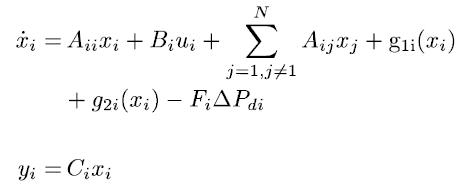
International Journal of Electrical and Electronics Research ISSN 2348-6988 (online) Vol. 10, Issue 2, pp: (9-16), Month: April - June 2022, Available at: www.researchpublish.com
In this section, the structure of Fuzzy Logic controller is designed as shown in Fig.2; the parallel combination between Fuzzy controller and PID controller is adopted in this system. Fuzzy controller is composed of the following four elements [18]:
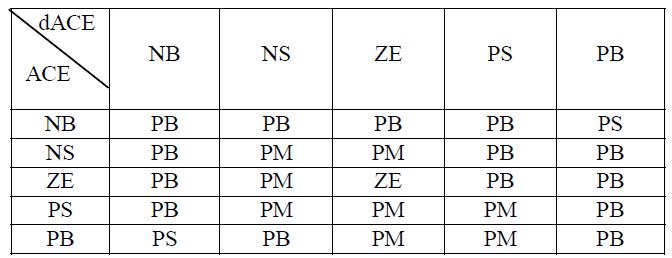
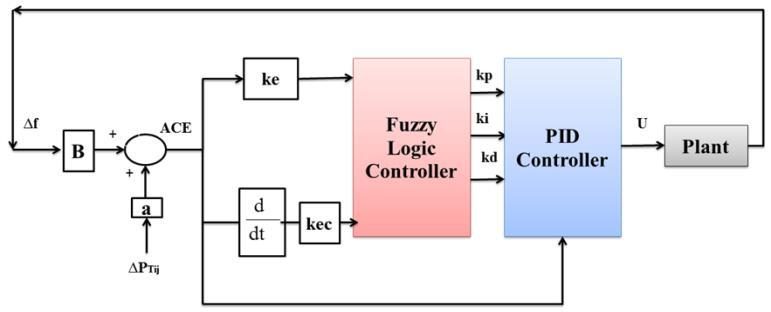
• A rule-base (a set of If-Then rules).
• An inference mechanism.
• Fuzzification interface.
• Defuzzification interface.
Fig. 2: Fuzzy logic control modeling
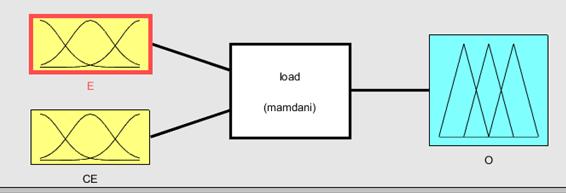
For the load frequency control problem , the inputs of the fuzzy logic control are the variables error (ACE) and change of error (dACE), and in the output of fuzzy logic O is calculated out according to offline rules in fuzzy controller as shown in Fig.3.
Fig. 3: Fuzzy variables definition
Fig. 4: Fuzzy membership functions
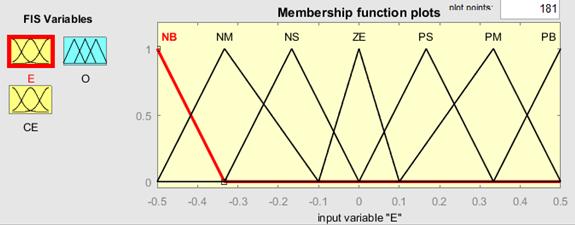
The control rules are built from the statement: if input a and input b then output c, and Table.I resume the control rules used in this paper. The two input signals (ACE, dACE) are converted to fuzzy numbers first in fuzzifier using five membership functions. In this paper we use the Triangular membership functions. Then they are used in the rule table shown in Table.I to determine the fuzzy number of the compensated output signals.
TABLE I: CONTROL RULES.
International Journal of Electrical and Electronics Research ISSN 2348-6988 (online) Vol. 10, Issue 2, pp: (9-16), Month: April - June 2022, Available at: www.researchpublish.com
As a result, we've created an adaptive network that functions similarly to a type-3 fuzzy inference system. The extension of type-1 fuzzy inference systems is simple, and the type-1 ANFIS is presented in Fig.5 where the output of each rule is induced jointly by the output membership function and the firing strength. If we replace the centroid defuzzification operator with a discrete version for type-2 fuzzy inference systems, which calculates the ap proximate centroid of area, then type-3 ANFIS can still be constructed accordingly. However, it will be more complicated than its type-3 and type-1 versions [19, 20] and thus not worth the efforts to do so. Fig. 5 shows a 1-input, type-3 ANFIS with nine rules, each governed by a fuzzy if-then condition Rule Three membership functions are associated with each input, so the input space divided into nine fuzzy subspaces. The premise part of a rule delineates a fuzzy subspace, while the consequent part specifies the output within this fuzzy subspace.
Fig. 5: ANFIS structure
IV. SIMULATION RESULTS
Three-area interconnected hydro-nuclear-thermal system model is shown below:
Fig. 6: Simulink modeling of three area system
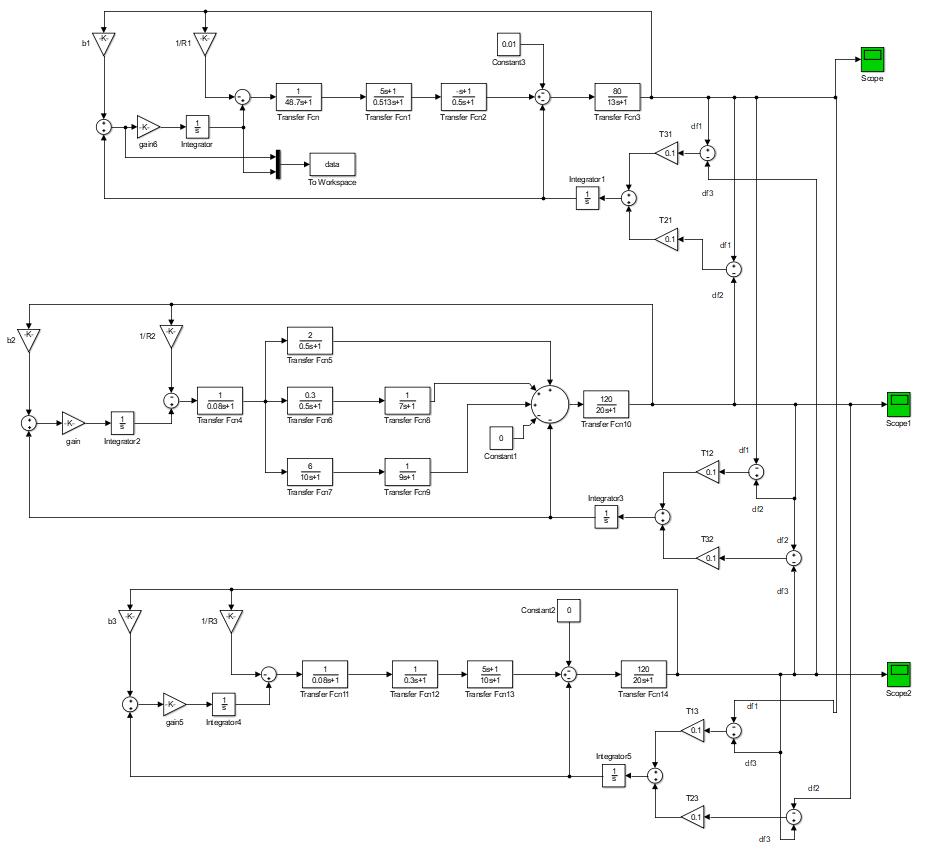

International Journal of Electrical and Electronics Research ISSN 2348-6988 (online)
Vol. 10, Issue 2, pp: (9-16), Month: April - June 2022, Available at: www.researchpublish.com
Fig. 7: Fuzzy or ANFIS controller

With all the above modules the simulation of three area network system is run for 200sec with small disturbance in the first network. The outcomes are listed in the table below. Fig.
Fig. 8: Load frequency response of the first network
Fig. 9: Load frequency response of the second network

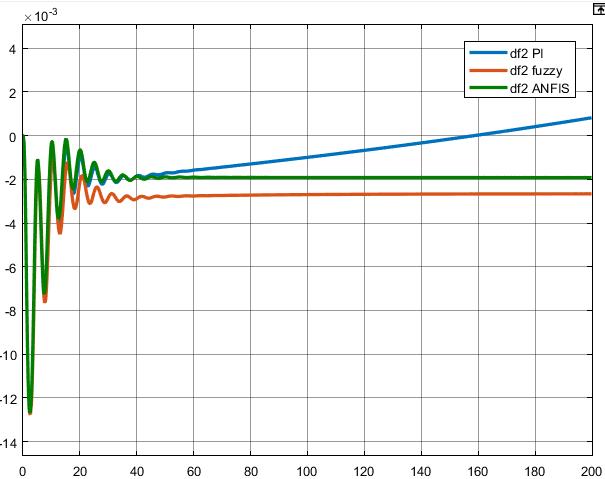
Fig. 10: Load frequency response of the third network
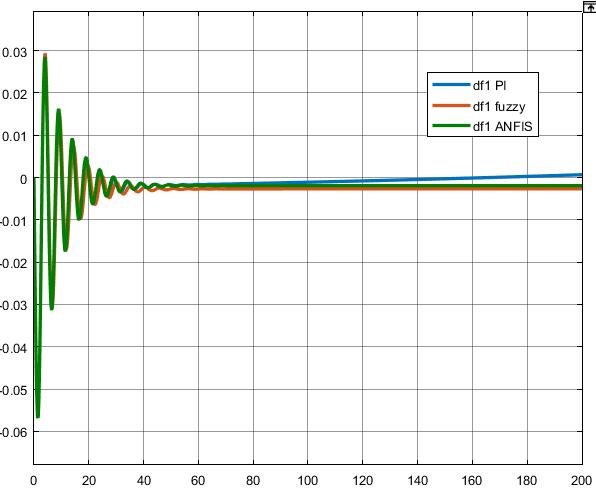
International Journal of Electrical and Electronics Research ISSN 2348-6988 (online) Vol. 10, Issue 2, pp: (9-16), Month: April - June 2022, Available at: www.researchpublish.com
As observed the change in load frequency of all the networks are maintained stable for fuzzy and ANFIS controllers. The PI value is drifting and always in variable state. The ANFIS controller is more stable as the value generated is more near to zero as compared to fuzzy.
V. CONCLUSION
In this paper a Load frequency control (LFC) of interconnected multi-area power system is studied. The effect of the LFC control approach on step load disturbance-induced fluctuations is investigated.An application of Fuzzy Logic Control (FLC) for determining the optimal values for the PID controller based load frequency control (LFC) is applied here. It is clear that with optimal PID parameters the fluctuations of the system frequency and tie-line power flow are most effectively suppressed. The results are compared to ANFIS has proven to be the most efficient. Considering the disturbance as 1%, the result for different cases are compared and it shows that ANFIS gives improved dynamic response than PI and fuzzy logic controller.
REFERENCES
[1] T. Bevrani and H. Bevrani, Intelligent Automatic Generation Control. Boca Raton, FL, USA: CRC press, 2011.
[2] P. Kundur, Power System Stability and Control. New York, NY, USA: Mc-Graw Hill, 1994.
[3] C.Zhang,L. Jiang,Q.H.Wu, Y. He,and M. Wu,―Delay-dependent robust load frequency control for time delay power systems,‖ IEEE Trans. Power Syst., vol. 28, no. 3, pp. 2192–2201, Aug. 2013.
[4] H. Trinh, T. Fernando, H. H. C. Iu, and K. P. Wong, ―Quasi-decentralized functional observers for the LFC of interconnected power systems,‖ IEEE Trans. Power Syst., vol. 28, no. 3, pp. 3513–3514, Aug. 2013.
[5] S. Saxena and Y. V. Hote, ―Load frequency control in power systems via internal model control scheme and modelorder reduction,‖ IEEE Trans. Power Syst., vol. 28, no. 3, pp. 2749–2757, Aug. 2013.
[6] H. Bevrani andT.Hiyama, ―Onload-frequency regulation with time delays: Design and real-time implementation,‖ IEEE Trans. Energy Convers., vol. 24, no. 1, pp. 292–300, Mar. 2009.
[7] H. Shayeghi, H. A. Shayanfar, and A. Jalili, ―Load frequency control strategies: A state-of-the-art survey for the researcher,‖ Energy Con-vers. Manag., vol. 50, pp. 344–353, 2009.
[8] Ibraheem, P. Kumar, and D. P. Kothari, ―Recent philosophies of automatic generation control strategies in power systems,‖ IEEE Trans. Power Syst., vol. 20, no. 1, pp. 346–357, Feb. 2005.
[9] W. Tan, ―Unified tuning of PID load frequency controller for power systems via IMC,‖ IEEE Trans. Power Systems,vol.25,no.1,February 2010.
[10] A. Khodabakhshian and M. Edrisi, ―A new robust PID load frequency controller,‖ Control Eng. Practice, vol. 16, pp. 1069–1080, 2008.
[11] L. Dong, Y. Zhang, and Z. Gao, ―A robust decentralized load frequency controller for interconnected power systems,‖ ISA Trans., vol. 51, pp. 410–419, 2012.
[12] H. Bevrani, Y. Mitani, and K. Tsuji, ―Robust decentralised load-frequency control using an iterative linear matrix inequalities algorithm,‖ Proc. Inst. Electr. Eng. Gener., Transm. Distrib.,vol.151,no.3,May 2004.
[13] S. Velusami and I. A. Chidambaram, ―Decentralized biased dual mode controllers for load frequency control of interconnected power systems considering GDB and GRC non-linearities,‖ Energy Convers. Manag., vol. 48, pp. 1691–1702, 2007.
[14] R. Arivoli and I. A. Chidambaram, ―CPSO based LFC for a two-area power system with GDB and GRC nonlinearities interconnected through TCPS in series with the tie-line,‖ Int. J. Comput. Applications, vol. 38, no. 7, pp. 1–10, Jan. 2012.
[15] N. Hoonchareon, C. Ong, and R. A. Kramer, ―Implementation of an ACE1 decomposition method,‖ IEEE Trans. Power Syst., vol. 17, no. 3, pp. 757–761, Aug. 2002.
International Journal of Electrical and Electronics Research ISSN 2348-6988 (online) Vol. 10, Issue 2, pp: (9-16), Month: April - June 2022, Available at: www.researchpublish.com
[16] J. Talaq and F. Al-Basri, ―Adaptive fuzzy gain scheduling for load frequency control,‖ IEEE Trans. Power Syst.,vol. 14, no. 1, pp. 145–150, Feb. 1999.
[17] A. Abdennour, ―Adaptive optimal gain scheduling for the load frequency control problem,‖ Electr. Power Compon. Syst., vol. 30, pp. 45–56, 2002.
[18] I. Kocaarslan and E. Cam, ―Fuzzy logic controller in interconnected electrical power systems for load-frequency control,‖ Electr. Power Energy Syst., vol. 27, pp. 542–549, 2005.
[19] H. Bevrani and P. R. Daneshmand, ―Fuzzy logic-based load-frequency control concerning high penetration of wind turbines,‖ IEEE Syst. J., vol. 6, no. 1, pp. 173–180, Mar. 2012.
[20] S. H. Hosseini and A. H. Etemadi, ―Adaptive neuro-fuzzy inference system based automatic generation control,‖ Electr. Power Syst. Res,, vol. 78, pp. 1230–1239, 2008.
